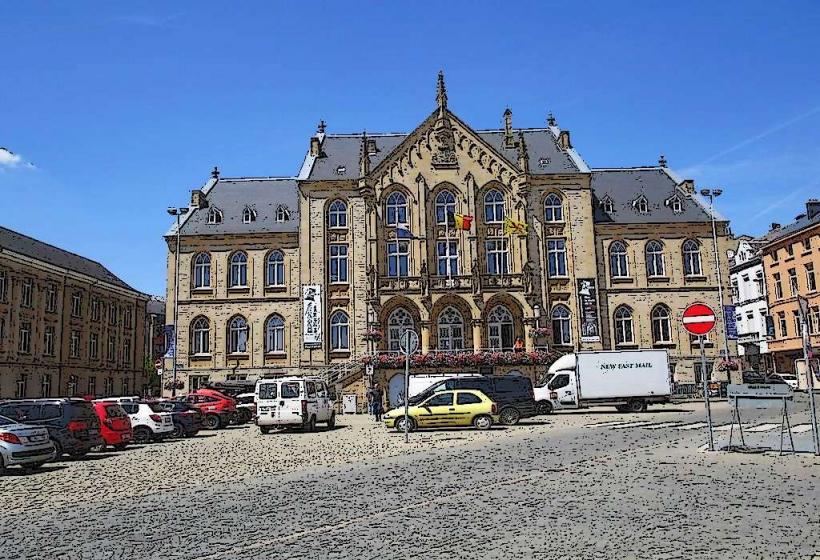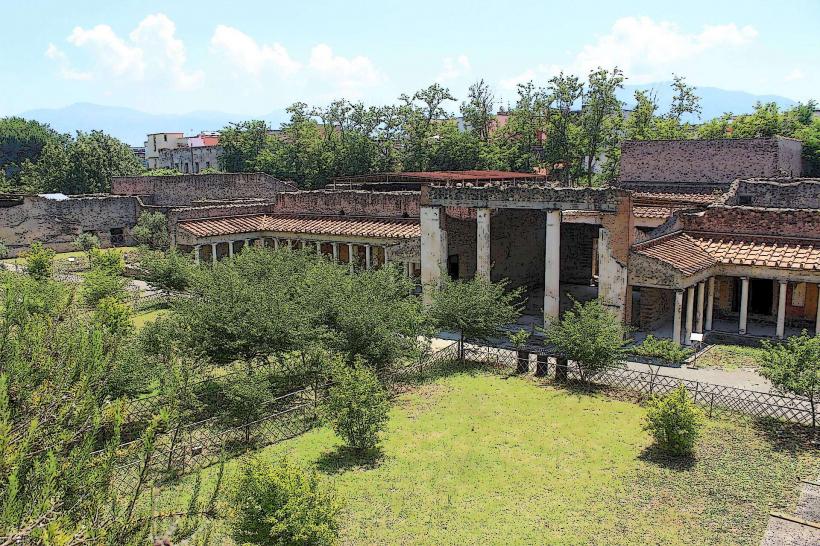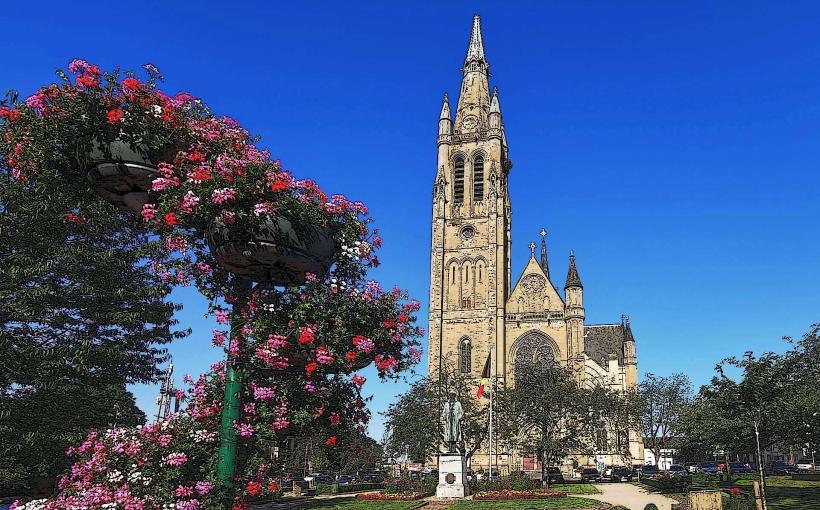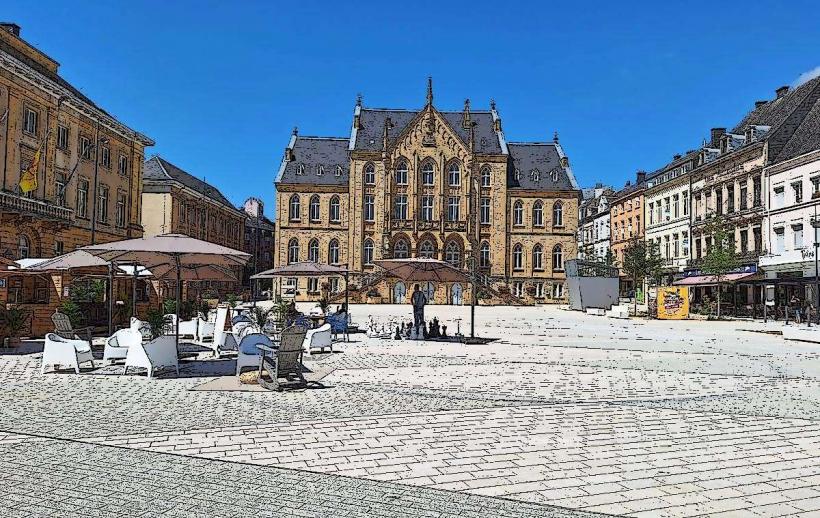Information
Landmark: Arlon Archaeological MuseumCity: Arlon
Country: Belgium
Continent: Europe
The Arlon Archaeological Museum (Musée Archéologique d'Arlon) is located in Arlon, the capital of the Luxembourg province in the Walloon Region of Belgium. The museum is dedicated to preserving and showcasing the archaeological heritage of the Arlon area and the broader Gaumais region, with a particular emphasis on the prehistoric, Roman, and Medieval periods.
History
Founding: The museum was established in the 19th century, following significant archaeological discoveries in the area, particularly related to the Roman presence in the region. Arlon, known in Roman times as Orolaunum, was an important settlement, and the discovery of numerous artifacts prompted the creation of a dedicated institution to house these items.
Location: The museum is situated in a historical building, the former Jesuit college, which provides a fitting context for its collection of archaeological and historical artifacts. The building itself is a significant part of the town's architectural heritage.
Collections
The museum's collections span various periods, with a strong focus on the ancient history of the region. The primary collections include:
Prehistoric Period:
- The museum contains important prehistoric artifacts, such as tools, pottery, and weapons, that date back to the Stone Age and Bronze Age. These items reflect the early human settlement of the region and the development of basic agricultural and crafting techniques. Tools made from flint, bone, and stone are prominent in this section.
Roman Period:
- The Roman era is particularly significant in the museum’s collection, as Arlon (Orolaunum) was a thriving settlement in Roman times. The museum displays a range of Roman-era artifacts, including coins, ceramics, statues, and inscriptions. Some of the most notable pieces include Roman altars, funerary objects, and architectural fragments that were uncovered in the region, offering a glimpse into the city’s role as a regional hub.
- One of the standout features is the Roman mosaic, which depicts scenes from daily life and Roman mythology, showcasing the luxury and culture of Roman-era inhabitants.
Medieval and Post-Roman Artifacts:
- The museum also covers the Medieval and Early Modern periods. It includes items from the Merovingian, Carolingian, and Medieval periods, such as weapons, coins, and religious artifacts. The collection also showcases medieval pottery, armor, and objects used in daily life during the Middle Ages.
- The medieval section of the museum highlights the role of Arlon as an important center during the Middle Ages, with displays on the feudal system, church life, and the role of the town in regional trade.
Numismatics:
- The museum houses an extensive collection of coins, with a focus on the Roman period. These coins offer insight into the economy, political history, and trade networks that existed in the region during antiquity. Coins from the Roman Empire, as well as those from the Middle Ages, are featured in this section.
Sculpture and Funerary Art:
- The museum holds several pieces of Roman sculpture, including busts, statues, and reliefs, many of which have been discovered in and around the region. Funerary monuments, such as tombstones and inscriptions, are also an important part of the collection, shedding light on burial practices and religious customs.
Medieval Art and Religious Objects:
- In addition to the Roman artifacts, the museum includes medieval religious artifacts, such as crosses, chalices, liturgical items, and manuscripts. These items reflect the deep religious influence on the region during the Middle Ages and the role of the Church in shaping the local culture and society.
Notable Exhibits and Highlights
Roman Mosaic: One of the museum's most famous exhibits is a Roman mosaic that was discovered during excavations in the region. The mosaic offers a vivid portrayal of Roman life and culture, featuring intricate designs and images from mythology and daily life.
Roman Funerary Monuments: The museum holds several important Roman funerary monuments, including tombstones and stelae that depict scenes from Roman burial practices. These artifacts help to understand the social and cultural life of the time.
The Coin Collection: The collection of Roman coins is particularly valuable for understanding the economic and political structure of the Roman Empire. Coins from the reigns of emperors and local rulers provide insights into the region’s role in the larger Roman economy.
Sculptures and Statuary: The museum’s collection of Roman and medieval sculptures is another highlight. It includes busts and statues that offer a glimpse into the artistic styles of the ancient world.
Educational Programs and Activities
Workshops and Guided Tours: The museum offers various workshops and guided tours for schools and the general public. These programs aim to educate visitors about the rich history of Arlon and its importance in the ancient and medieval worlds.
Temporary Exhibitions: The museum frequently hosts temporary exhibitions, which focus on specific themes or periods. These exhibitions are often dedicated to specific archaeological discoveries, historical events, or artistic movements.
Archaeological Fieldwork: The museum is also involved in ongoing archaeological excavations and research in the Gaumais region. Many of the artifacts displayed in the museum are the result of these excavations, and new findings are regularly integrated into the exhibits.
Modern-Day Role
Cultural Heritage Preservation: The Arlon Archaeological Museum plays an essential role in preserving the region’s cultural heritage. It serves as a repository for artifacts, documents, and other items that tell the story of the area's past.
Tourist Attraction: The museum is a key cultural attraction in Arlon, drawing visitors from Belgium and abroad. Its focus on the Roman period and its location in Wallonia make it a valuable destination for history and archaeology enthusiasts.
Research and Collaboration: The museum collaborates with other institutions and archaeological teams in Belgium and abroad. Its research efforts contribute to a broader understanding of the region’s history, particularly during the Roman and Medieval periods.
Conclusion
The Arlon Archaeological Museum is a vital cultural institution that showcases the rich archaeological and historical heritage of Arlon and the Gaumais region. Its collections, which span from the Prehistoric to the Medieval period, offer visitors a comprehensive look at the region’s past, with a particular focus on its Roman heritage. Through its exhibitions, research, and educational programs, the museum plays a central role in preserving the cultural identity of Arlon and educating the public about its ancient and medieval history.





